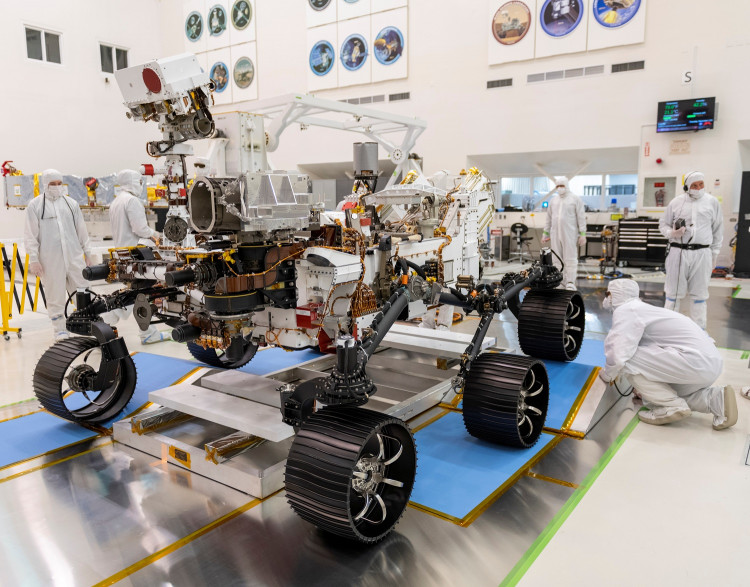The Perseverance Mars rover arrived on Mars in February 2021, bringing with it, among other things, a weather station called Mars Environmental Dynamics Analyst (MEDA). This instrument contains two wind sensors that calculate speed and direction, as well as numerous other sensors that provide weather data such as humidity, radiation, and air temperature.
One of the wind sensors was recently damaged by pebbles pushed aloft by powerful Red Planet gusts, but MEDA can still monitor the wind near its landing place in Jezero Crater, albeit with reduced sensitivity.
During ground training exercises in 2019, the Perseverance Chariot installs one of its wind sensors on the Mars Environmental Dynamics Analyzer.
The Wind Sensor, like all the other tools in Tenacity, was created with redundancy and safety in mind, according to Rodriguez Manfredi of the Spanish Astrobiology Center in Madrid. Nevertheless, everything has its boundaries.
The limit is also more difficult for instruments like MEDA because the sensors need to be exposed to the outside to record wind characteristics. However, the combination of stronger-than-expected gusts and larger-than-expected pebbles destroyed some of the detector's components.
According to Materials(Opens in a new tab) from NASA's Jet Propulsion Laboratory in California, which runs the rover, two wind sensors about the size of a ruler in perseverance are flanked by six separate detectors meant to give reliable data from any direction.
Because the tenacity of the vehicle's size does not alter the wind currents with its motions during Mars atmosphere, each of the two main wind sensors is connected to an arm that can unfurl to transfer the sensors away from the rover when it is driving, according to JPL officials.
"Neither the forecasts nor the knowledge we obtained from prior flights anticipated such high winds, nor much loose stuff like that," NASA's Rodriguez Manfred said.
The NASA Insight lander has been on the Red Planet since November 2018 and its mission is anticipated to end this year. He is also the lead researcher for another temperature and wind sensor on the lander.
On Feb. 18, 2021, Perseverance and a helicopter named Cleverness touched down on Mars. Perseverance is exploring an ancient river delta that may have been teeming with microbes billions of years ago.
The rover also collects the most promising material for future sample temporary storage to transfer samples to land in the thirties, in addition to analyzing wind, weather, and rock composition.





